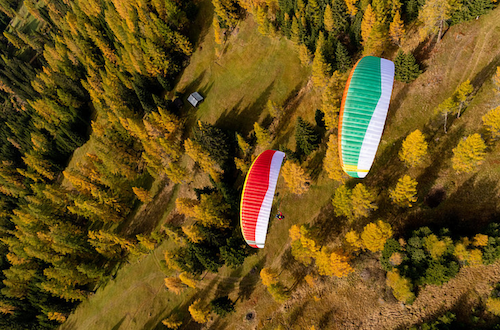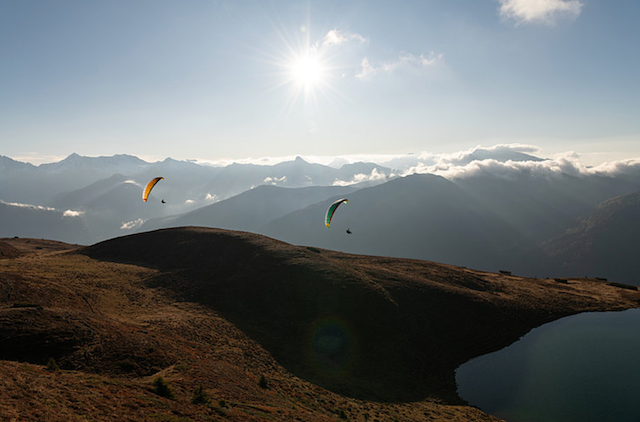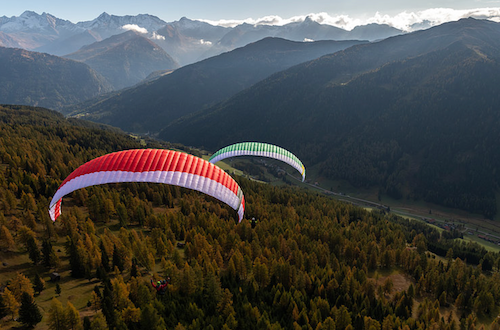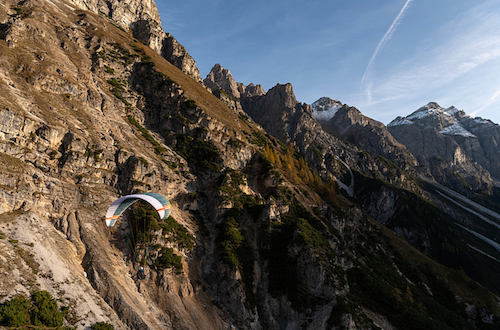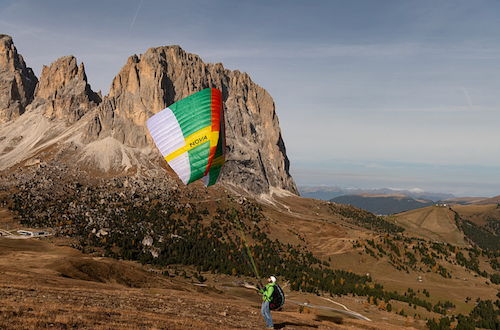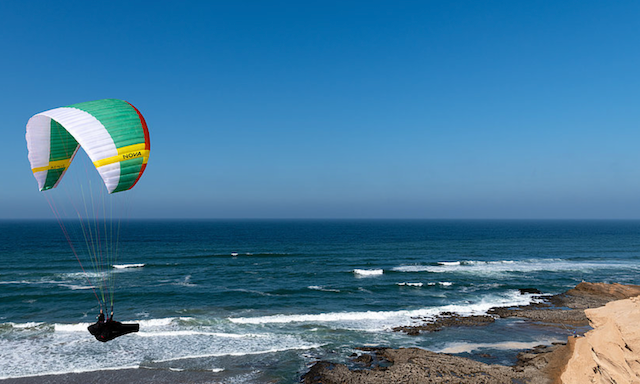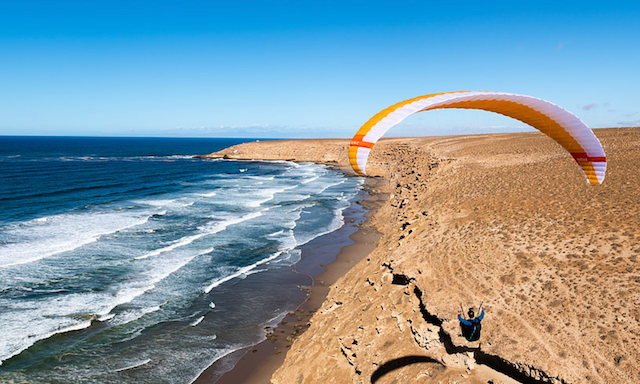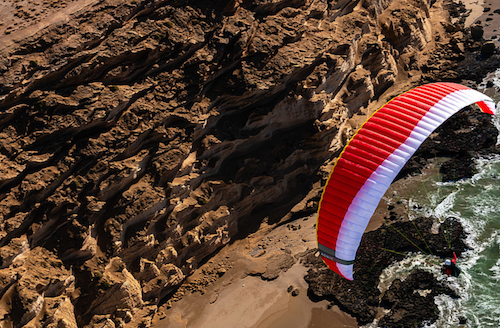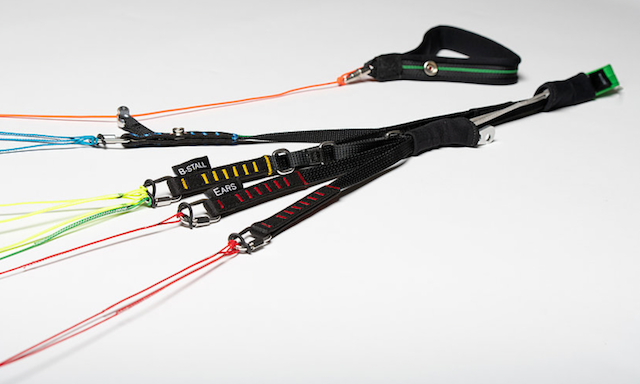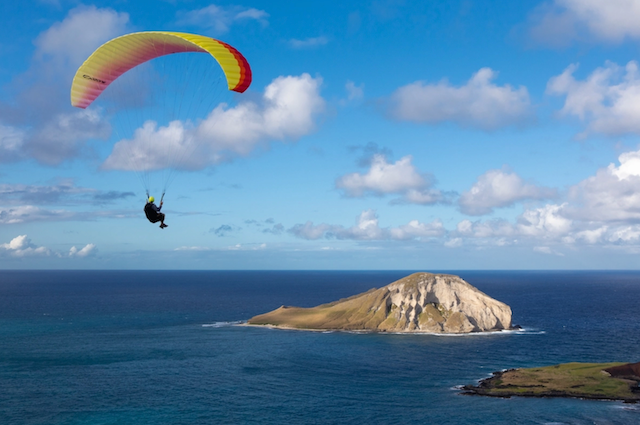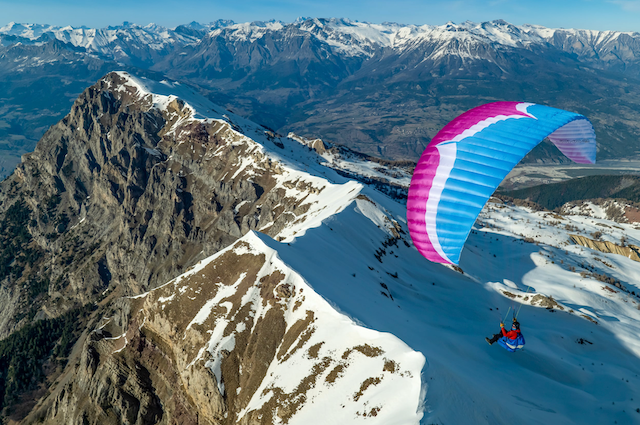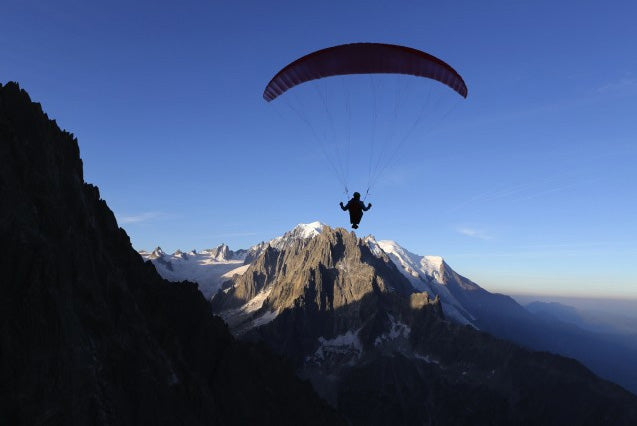Three-liner | 49 cells | 5.17 aspect ratio | Weight 4.75 kg - Size S (EN/LTF A)
AONIC - Take your skills to “A” higher level
The high-end EN A paraglider AONIC impresses with sportiness and performance, which is not usually found with EN A gliders - and is nevertheless suitable for instruction due to its high level of safety.
A fresh breeze for the EN A class
The AONIC paves the way to the upper end of the EN A class. From the first day in the air. It is therefore ideal for ambitious paragliding students - and all pilots who want to consciously hone their skills within the EN A class. Is the change to an EN B wing inevitable at some point? Not necessarily. With an aspect ratio of 5.17, 49 cells and a minimalist line set design, the AONIC offers performance and handling like an EN B class wing, but with a plus in safety. This also makes it attractive for pilots who want to change to an EN A wing. Good reasons to do this are plentiful. Foremost is the desire for relaxed flying - always, everywhere and without missing anything.
Going places together
During the testing phase, special attention was paid to making the AONIC easily accessible and versatile. The AONIC offers intuitive handling, high passive safety and a pleasant pinch of agility and speed - a mixture with a lot of potential for adventure - thanks to its elaborate technical design and an optimisation of the material down to the last detail. Anyone who learns to fly with the AONIC will continue to enjoy their glider for a long time after their training is completed. Be it SIV/pilotage, XC flights, travel or simply soaring the local mountain.
Keeping all options open
With the AONIC it is easy to gain a lot of flight experience within the EN A class. Which is always an advantage - not only if you decide to move up to the EN B class later or if you get to the point where you want to specialise in a particular branch in paragliding. Hike & fly, cross-country, competition, acro - if at any time one of these branches of the sport becomes YOUR passion, then the AONIC is certainly a great first wing to ensure solid preparation. If the broad spectrum of paragliding is still your goal, you never need to part ways with the AONIC.
Head free for the essentials
Of course, feeling comfortable with your wing starts before you take off - e. g. with easy to sort lines, thanks to sheathed main lines and only very few gallery lines. The AONIC's combination of Dyneema A and B-lines, and the C main lines and gallery lines being made from Kevlar, means small diameter and high trim stability. The risers were designed especially for this wing and the lines used during maneuvers like big ears and a B-line stall are marked. We also use the colour scheme recommended by the PMA for both the risers and the lines: A = red, B = yellow, C = blue, brake = orange, stabilo line = green. The coloured markings for right and left also make it easier to check whether you have correctly attached yourself to the harness. And talking of harnesses… our versatile VENTUS is the ideal harness for the AONIC
The AONIC can be delivered with optional Student Risers and Adjustable Handles.

If you prefer less skinny risers, you can alternatively order our renowned Student Risers. These are also found on, for example, our EN A PRION 5 and therefore are commonly used in flying schools. They feature wider webbing (20 mm instead of 12 mm) which make sorting them easier when ground handling and preparing for launch and they have the same markings as the regular AONIC risers. The Student Risers are always delivered with Adjustable Handles. These are innovative brake handles that can be individually adjusted to the pilot's hands and thus facilitate correct gripping. This design was created in co-operation with the DHV. The Adjustable Handles are also available separately or in combination with the standard risers of the AONIC.
Pilot target group
The AONIC (EN/LTF A) offers maximum speed, manoeuvrability and glide performance within the A class - without neglecting the high safety requirements of a paraglider suitable for instruction. The AONIC is perfect for students who quickly develop a good feeling for ground handling and for their initial flights on practice slopes. Once in the air, the fact that it is a high-end EN A becomes immediately obvious: control inputs are converted quickly and with momentum. The speed-system also lives up to its name, without drastically increasing the sink rate - which is often dreaded with EN A wings. We recommend pilots in training to fly the AONIC in the middle of the weight range. For experienced pilots, the upper range of the certified take off weight is also suitable.
The AONIC – tested by “Parapente+”
The French paragliding magazine “Parapente+” published a detailed test of the AONIC (EN/LTF A+) in their issue 472 (September/October 2020). Their conclusion:
„(…) For me, in cross-country use, I was very pleasantly surprised by this wing, which delivers a nice mix of compactness, manoeuvrability and comfort. It is simple and safe, yet still snappy and fast, offering great performance. It will therefore be very well suited as a progression wing (piloting, thermalling, cross country) or as an all-round glider with real potential, a very safe and intuitive behaviour, not boring at all! I haven't felt any frustration under this wing, whether in terms of speed, flying pleasure, performance or handling.”
The English PDF can be downloaded here. The original article is in French. Thanks to the team of “Parapente+” for the consent to share their test!
The AONIC – tested by “Thermik"
„To know how far you can fly with an Aonic, you only have to strain the past in the XContest server and look up Berni Peßl and Co. FAI triangles of over 200 km were not uncommon!“
The English PDF can be downloaded here. There original article is in German. Thanks to the team of “Thermik“ for the consent to share their test!
New design
The central design element is the sweep, which visually emphasises the aspect ratio of the wing, complemented by a differently coloured banderole on the outer wing. The product and brand name can be seen on the banderoles. What is special about the banderole is that its placement and composition across several cells varies slightly from model to model.
3D-Shaping
In 3D-shaping, a seam on the upper surface extends over the entire span and reduces the amount of folds caused by the curvature over two axes. Two axes, because the sail cloth has to align to the profile form and the ballooning also determines a radius which the cloth also has to follow. What is ballooning? The internal pressure of the glider is higher than the external pressure at almost all points of the upper and lower surface. This determines how the cell inflates. The resulting "bulge" of the cell is called "ballooning".
Air Scoop
Air Scoop is the term used to describe an adjustment of the cell opening that ensures that the intake surface is less reduced when flying at high speed. The idea is similar to the ram-air inlet duct on a sports car: the more intake area the more charging and internal pressure. It improves the collapse resistance, particularly in accelerated flight, and simultaneously increases performance. This feature enhances both safety and performance.
Weight-optimised cloth
We not only test the sail cloth for durability (high porosity or reduced tear resistance through UV damage or wear) but also for mechanical robustness, for example stretching. For quality control purposes we regularly take samples during serial production.
Simple line set design
The AONIC only has two line galleries: main lines and gallery lines, but there is no middle gallery. This means only very few line elements and as a result, they are very simple to sort.

Re-designed risers
The AONIC risers are a combination of the risers used on our well-established PRION and ION models. From the former, we took the distinctive colour-coding (big ears, B-line stall), from the latter the somewhat narrower and lighter material.

Ergonomic brake handles
We first developed the new brake handles for the MENTOR 6, and they have been so popular that they also feature on the AONIC. The new brake handles have an ergonomic design and are comfortable to handle.
Aonic |
XXS |
XS |
S |
M |
L |
|---|---|---|---|---|---|
| Number of cells | 49 | 49 | 49 | 49 | 49 |
| Projected span (m) | 8.09 | 8.50 | 8.89 | 9.28 | 9.68 |
| Projected area (m2) | 18.87 | 20.84 | 22.76 | 24.82 | 27.02 |
| Projected aspect ratio | 3.47 | 3.47 | 3.47 | 3.47 | 3.47 |
| Flat span (m) | 10.75 | 11.29 | 11.80 | 12.32 | 12.86 |
| Flat area (m2) | 22.32 | 24.64 | 26.92 | 29.35 | 31.95 |
| Flat aspect ratio | 5.17 | 5.17 | 5.17 | 5.17 | 5.17 |
| Line length (m) | 6.28 | 6.60 | 6.90 | 7.21 | 7.52 |
| Total line length (m) | 220 | 232 | 243 | 252 | 266 |
| Max chord (m) | 2.58 | 2.71 | 2.85 | 2.97 | 3.10 |
| Weight (kg) | 4.05 | 4.40 | 4.75 | 5.05 | 5.40 |
| Certified weight range (kg) | 55-80 | 70-90 | 80-100 | 90-110 | 100-130 |
| Certification | EN A | EN A | EN A | EN A | EN A |
Materials
| Leading edge: | Dominico 30D, 41 g/m2 |
|---|---|
| Top surface: | Dominico 20DPS, 33 g/m2 |
| Lower surface: | Dominico 20DPS, 33 g/m2 |
| Profile ribs (suspended): | Porcher Skytex 40 Hard, 40g/m2 |
| Profile ribs (unsuspended): | Porcher Skytex 40 Hard, 40g/m2 |
| Main lines: | Liros PPSL 191 / TSL 140 |
| Gallery lines: | Edelrid U-8000 series |
| Brake lines: | Cousin 85 / PPSLS65 |
| Risers: | Kevlar 12mm |
Colors
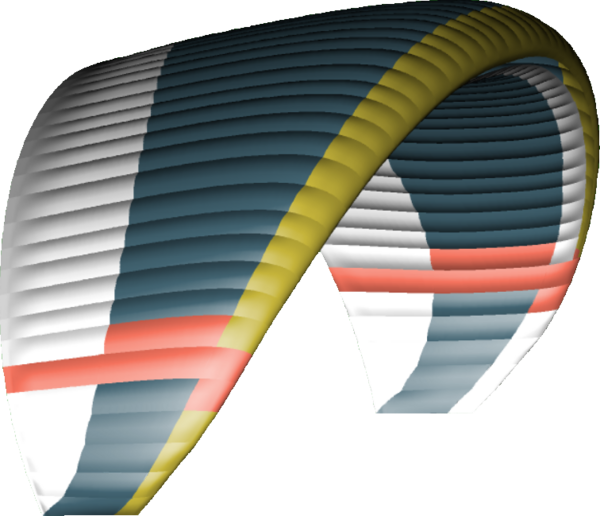 Blue
Blue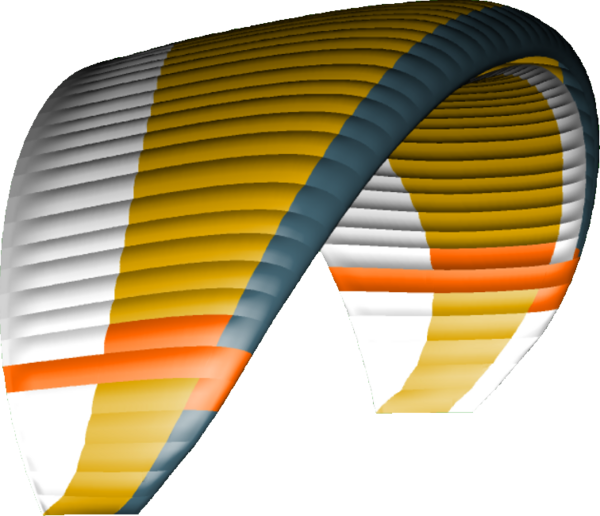 Gold
Gold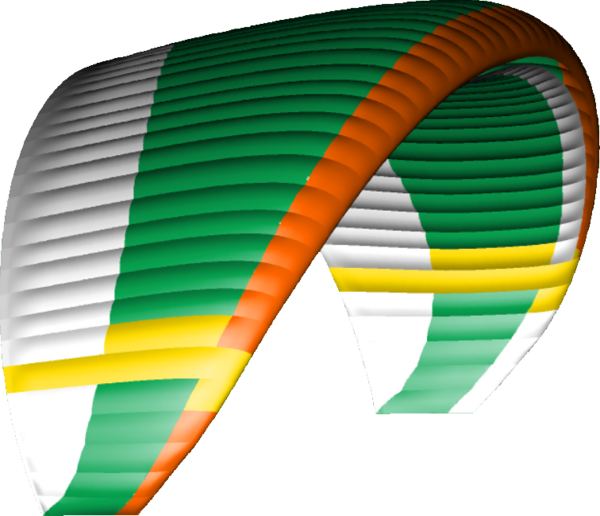 Green
Green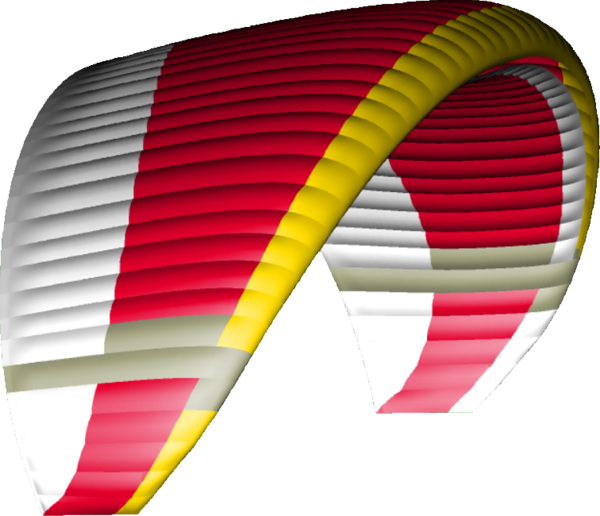 Red
Red
